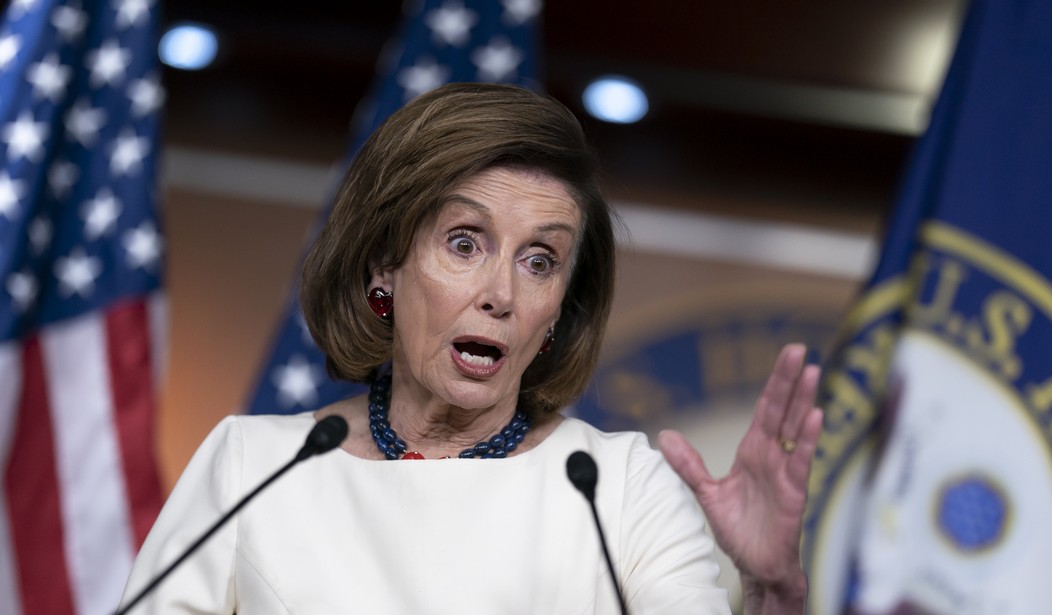I know, I know … what wallets? Your wallets in 2043 or so, perhaps, as Congress has finally agreed to spend your money to at least that point for the rest of the year. The logjam on the stalled FY2022 budget finally broke with a new plan to spend even more money on everyone’s priorities.
We won’t even get a government shutdown out of this, but it might cut that pretty close:
Congressional leaders announced Wednesday they had agreed on a $1.5 trillion spending measure that funds the government through the end of September — and includes $13.6 billion in aid for Ukraine.
With Congress facing a deadline of 11:59 p.m. Friday to avert a government shutdown, a House vote was scheduled for later Wednesday on the 2,741-page measure. Separately, the House planned to vote on a stopgap measure that would keep funding at current levels through March 15. That would allow Congress extra time to approve the larger bill and send it to President Biden without any pause in funding.
Part of the conflict between Republicans and Democrats was tension on spending increases for either defense or non-defense spending. That problem was neatly solved, Roll Call reports, by simply increasing both:
The long-awaited package for the current fiscal year, which is nearly half over, would provide about $1.5 trillion in discretionary spending for all federal departments and agencies. It also resolves a monthslong partisan standoff over how to divvy up the budget pie between defense and nondefense programs.
Defense-related spending would rise by $42 billion, or 5.6 percent, over last year’s level, to $782 billion. Nondefense spending would increase by $46 billion, or 6.7 percent, to $730 billion, according to a summary from House Appropriations Committee Democrats.
Those increases come close to meeting the Republican demand for “parity” between defense and nondefense spending, which had stalled negotiations for months. In the end, Republicans won more generous boosts for the Pentagon and other national security accounts than the earlier fiscal 2022 defense authorization law envisioned. And Democrats were forced to come down off of their initial nondefense spending bills in the House, which promised 16 percent increases on average.
It’s a darned good thing that money grows on trees! Otherwise, we might have to drill for it. Hey, it’s not like massive spending of money we don’t have has ever led us into problems like inflation, right? Right?
Republicans may have won this round, as Mitch McConnell brags, but in a good cause:
McConnell admitted that getting some of his Democratic colleagues to agree to increased defense spending in the bill was “like pulling teeth,” but emphasized that “It’s an important step. It needs to be passed. It needs to be passed quickly.”
More than $4 billion of the aid allocated for Ukraine will go toward helping it and other Eastern European countries cope with the surge of more than 2 million refugees who have fled the Russian invasion that began on Feb. 24.
Another $6.7 billion will be spent on the deployment of US troops and equipment to the region, as well as the transfer of military items to Ukraine and other allies.
Sounds great! And we can be sure that members have had a chance to read this thoroughly and understand all of the potential outcomes of this legislation, yes? Er … no:
How Congress legislates:
Members spend months negotiating spending bill and finally release 2,741-page bill at 1:34a
House Rules sends release at 2:42a saying rule was approved in Committee
Later Wednesday morning, full House will approve $1.5T bill that members haven’t read
— Manu Raju (@mkraju) March 9, 2022
As Nancy Pelosi declared over a decade ago, you have to pass the bill to find out what’s in it.
This is why the omnibus process is so bad for legislation and for government budgeting in practice, regardless of why it gets used. Appropriation bills that go through a committee process have their own level of opacity, but at least they give committee members enough time to know what they’re passing. The traditional twelve spending bills really should be broken up into smaller components still, but even in their usual form, they offer enough specificity and time for the prospect of full-chamber review before passage. And while committee chairs control most of that budgeting process with lots of interference from party leadership, regular order and the committee process offers other members at least some opportunities for engagement.
Omnibus bills like this don’t get any of those parliamentary checks. They’re written by party leaders in the cloak rooms and then shoved down the throats of the rank-and-file members, especially in the House. The omnibus process offers precisely zero opportunities for checks on power and rational review.
And that creates problems for party leadership, too. Wonder why so many backbenchers choose to leave in midterm cycles when their majority may disappear? No one wants to work in a minority when they have no real input, as well as no chance of addressing their policy priorities. At least in the regular-order committee model, a backbencher has the ability to shape legislation, especially on appropriations. Now all they do is just vote blindly on whatever their caucus leaders produce. Small wonder the backbenchers check out whenever the polls start looking shaky, which creates a self-fulfilling failure.
Anyway, three jeers for yet another budgetary agreement that solves none of America’s fiscal problems, and likely exacerbates most of them. We knew you’d all find a way to make things worse, so congrats, or something.
Update: Did someone actually read the bill? Hmmmm:
🚨🚨NEW: PROBLEMS IN THE HOUSE
House Democrats are holding open an adjournment vote because they are having trouble cobbling together the votes to pass the rule for omnibus/Russia bill.
Progressives are upset about offsetting of Covid money
Me and @heatherscope
— Jake Sherman (@JakeSherman) March 9, 2022







Join the conversation as a VIP Member